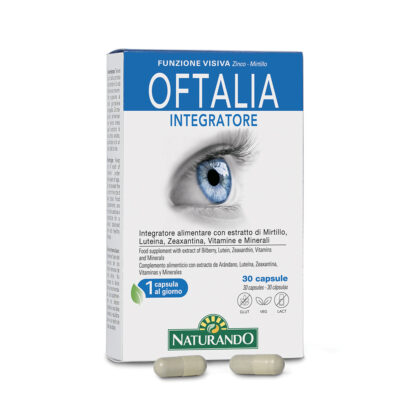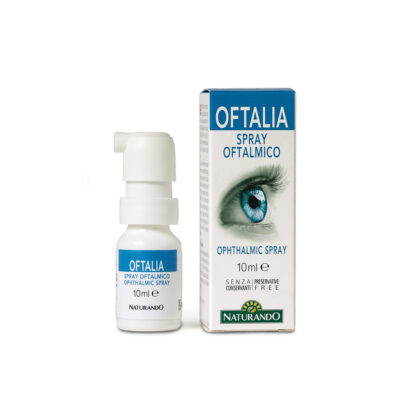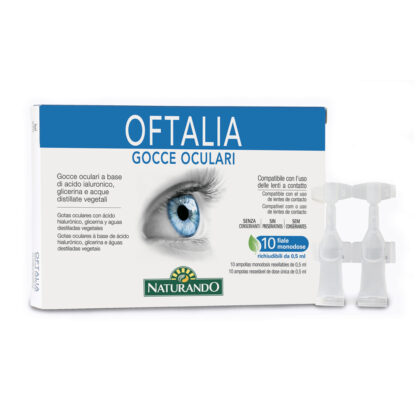
Eyes play a key role in our life. We use them to observe the world around us, capture its colours, perceive emotions and transmit our own.
All our day-to-day activities involve our eyes (and sight).Therefore, guaranteeing their health to our consumers means improving their well-being.
We often use the terms eyes and sight indifferently, but it is important to distinguish between these two words to understand how to approach the various problems.
Eye or sight: what is the difference?
When we use the term eye we refer to the vision organ; the critical aspect is that it remains in direct contact with the external environment and is consequently exposed to weather conditions. Obviously our organism has developed its own protection measure: the tear film.
When we use the term sight we refer to a complex physiological process that envisages the conversion of light stimulus into images. It is a mechanism that involves a range of different structures: from the eye, to the optical nerve, to the brain.
Distinguishing eye disorders from visual disorders
It is obvious at this point that eye disorders are completely different from those that impact sight.
Eye disorders: dry or red eyes, burning or itching sensations, the feeling that something is in one’s eye. In these cases we can find an alteration in the composition of the tear film.
Visual disorders: apart from the most common defects (myopia, astigmatism, presbyopia), there is also visual fatigue, caused by excessive use of electronic devices, and the alteration of sight in particular conditions (e.g. in the dark).
Eye and visual disorders: a different approach
In the case of eye disorders a superficial intervention on the organ is required, to support the tear film in its attempt to provide protection and reinstate comfort to the eye.
In the case of sight disorders, an intervention on a physiological process is required which, like all processes requires nutrients in order to function correctly. Naturally, in the case of sight defects, the basic solution is to correct the defects with glasses or contact lenses.
Visual function > Oftalia integratore
It is obviously necessary to act from the inside with a food supplement to provide the visual process with the required nutrients.
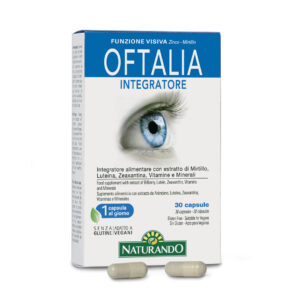
OFTALIA INTEGRATORE in addition to Blueberry, renowned for its vision support properties, also contains Lutein and Zeaxanthin, natural pigments which are highly concentrated in the macula, but also found in the crystalline and the retina, all parts of the eye involved in the vision process. It also has a mix of vitamins and minerals with antioxidant actions, and Zinc that maintains normal visual levels.
It is a practical one-a-day capsule product with vegetable-based Lutein and Zeaxanthin (Tagete)
Tired and dry eyes > Oftalia spray
When the eyes feel tired, dry or the eyelids “heavy” it is necessary to relieve the area by moisturising and refreshing the eye mucous.

In such cases the ideal solution is the OFTALIA SPRAY, a sterile medical treatment based on Cervia “Acqua Madre” thermal water and Liposomes. The thermal water is rich in essential electrolytes that rebalance all the conditions of eye discomfort and tear instability. The liposomes are essential to reinstate and stabilise the lipid component of the tear film, preventing further evaporation.
1-2 sprays on closed eyelids are sufficient to provide instant relief, even when wearing make-up or contact lenses.
It is recommended for those exposed to air conditioning, dry climates, wind or pollution, and in all cases of visual stress (e.g. prolonged driving, studying, use of contact lenses or electronic devices).
Dry or red eyes > Oftalia eye drops
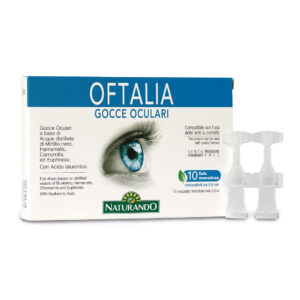
If the eyes are particularly dry or red, OFTALIA EYE DROPS are the ideal solution. This medical device contains Distilled water (Witch Hazel, Camomile and Euphrasia) which is able to bestow a refreshing and soothing effect on irritated areas, and Hyaluronic Acid and vegetable glycerine which boosts the moisturising and lubrication of the eye.
The typical cases where consumers benefit most from these eye drops are: dry eye syndrome, particular environmental conditions (allergens, smog, salt air, chlorine, dust) and visual stress.
The product comes in reclosable phials, which prevents product waste. It can also be used when wearing contact lenses.
Curated by Dr. Silvia Oberti

